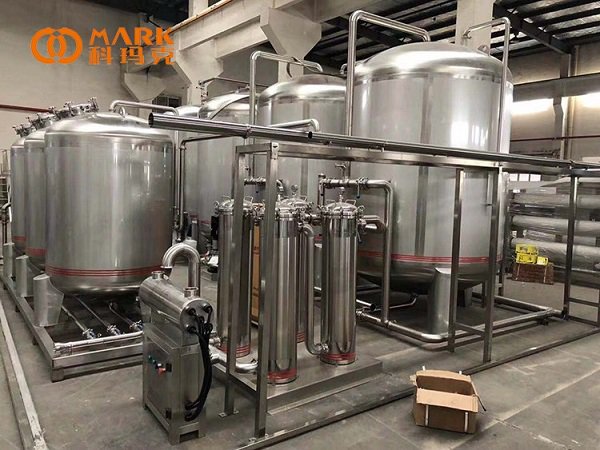Now everyone's family, the unit of living standards and living community also has a high requirement about the quality of the drinking water purification, mineral water production line of tap water for secondary processing, not only in addition to the large amounts of suspended solids, colloid particles and water, could make the water clean, clear transparent, but also to remove the organic matters, such as e. coli bacteria and pathogenic substances, Make tap water into clean and healthy straight drinking water.

Mineral water production line is mainly driven by pressure to purify the water, remove impurities in the water and retain certain trace elements. The bottled mineral water equipment has the characteristics of compact structure, simple installation and maintenance, small footprint, long service life and so on. The membrane separation process is driven by pressure and separated by sieve. The filtration accuracy is in the range of 0.005-0.01um. It can remove particles, colloid, bacteria and polymer organic matter in water. The ultrafiltration process has no phase transformation and has good temperature resistance, acid and alkali resistance and oxidation resistance. The ultrafiltration membrane adopts different construction forms, membrane materials and process design, which can adapt to different water quality conditions and separation functions.
In the water treatment method of mineral water production line, most of the pathogens in the activated water are eliminated, so that the microbial quality of the water can meet the requirements of human health, which is called disinfection. Disinfectants such as ozone, halogens and halogen compounds inactivate pathogens by destroying their basic physiological functional units, such as enzymes, coenzymes and hydrogen carriers. Comparison of killing efficiency and stability of several disinfectants:
Killing efficiency: Ozone & GT; Chlorine dioxide & GT; Chlorine & gt; chloramine
Stability: chloramine & GT; Dichlorodioxane & GT; Chlorine & gt; ozone
Therefore, ozone has a strong oxidability, and ozone is easy to dissolve into oxygen, will not remain in the water to pose a harm to the human body. However, because of its high cost, it is basically not used in large water plants, but because of its high oxidation potential, it is commonly used in the deep treatment of water.
By continuing to use the site you agree to our privacy policy Terms and Conditions.